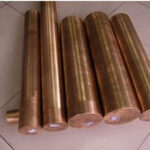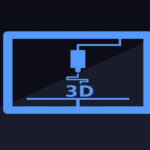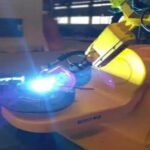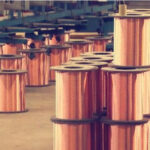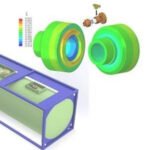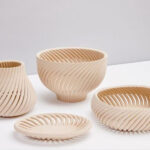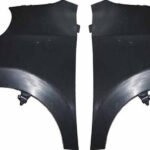Metal 3D printing is considered the culmination of all 3D printing. When it comes to strength and durability, nothing can compare to metal.
The earliest metal 3D printing patent was DMLS (Direct Metal Laser Sintering), which was obtained by the German EOS in the 1990s. Since then, metal 3D printing has gradually developed many types of printing processes. Now, every metal 3D printer usually uses one of the following four types of processes: powder bed fusion, binder injection, direct energy deposition, and material extrusion.
Metal Powder Bed Fusion
Table of Contents
Common processes:
DMLS (direct metal laser sintering), SLM (selective laser melting) and EBM (electron beam melting).
Description: Metal parts produced using PBF melting technology can reduce residual stress and internal defects, making them ideal for demanding applications in the aerospace and automotive industries.
Direct metal laser sintering (DMLS):
It can be used to build objects with almost any metal alloy. Direct metal laser sintering spreads a very thin layer of metal powder on the surface to be printed. The laser slowly and steadily traverses the surface to sinter this powder, and the internal particles of the metal fuse together, even if they are not heated to a completely molten state. An additional layer of powder is then applied and sintered to “print” one cross-section of the object at a time. After printing, the object will slowly cool down, and the excess powder can be recovered from the build chamber and recycled. The main advantage of DMLS is that the objects it produces have no residual stress and internal defects, which is extremely important for metal parts under high stress (such as aerospace or automotive parts), but the main disadvantage is that it is very expensive.
Selective Laser Melting (SLM):
Use a high-power laser to completely melt each layer of metal powder, not just sintering, so that the printed object produced is very dense and strong. Currently, this process can only be used for certain metals, such as stainless steel, tool steel, titanium, cobalt-chromium alloys, and aluminum. The high temperature gradient that occurs in the SLM manufacturing process can also cause stress and dislocation in the final product, which will damage the physical properties.
Electron beam melting (EBM):
It is very similar to selective laser melting and can generate dense metal structures. The difference between these two technologies is that EBM uses an electron beam instead of a laser to melt metal powder. Currently, electron beam melting can only be used for a limited number of metals. Although cobalt-chromium alloys can also be used, titanium alloys are still the main raw material for this process. This technology is mainly used to manufacture parts for the aerospace industry.
Technical advantages: Almost any geometric shape can be manufactured with high precision. A wide range of metals are used, including the lightest titanium alloy and the strongest nickel superalloy, which are difficult to process with traditional manufacturing techniques. The mechanical properties can be comparable to forged metals, and can be machined, coated and treated like traditional metal parts.
Technical disadvantages:
high material, mechanical and operating costs. The parts must be connected to the build plate through a support structure (to prevent warping), which generates waste and requires manual post-processing and removal. The build size is limited, and metal powder handling is dangerous, requiring strict process control.
Metal Binder Jetting
Commonly used processes: MJF (multi jet fusion), NPJ (nano particle jet)
Description:
This technology uses inkjet to selectively drop a binder onto a flat powder bed. The area receiving the droplets will be solidified, and the rest of the powder will remain loose. Perform the above steps layer by layer until the entire object is generated. This process can be used to process metals, sand, ceramics and other materials. Since the metal adhesive spraying machine operates at room temperature, there is no warpage and no support is required. Therefore, the binder spraying machine can be much larger than the powder bed fusion machine, and can stack objects, make full use of the entire build room, and is a popular choice for small batch production and on-demand manufacturing.
Technical advantages:
large volume printing is possible, parts do not need to be connected to the build plate, so they can be nested to utilize all available build volume. There are few restrictions on the geometry and usually no support is needed. There is no warpage, so larger parts can be made. The printing speed is very fast, and the cost is lower than powder bed molten metal printing.
Technical disadvantages:
parts must go through time-consuming degreasing and furnace sintering processes after printing, and the cost of machinery and materials is high. The porosity is higher than the powder bed fusion, so the mechanical properties are not so good, and there are fewer materials to choose from.
Direct Energy Deposition
Common processes:
DED (Direct Metal Deposition), WAAM (Arc Additive Manufacturing), LMD (Laser Material Deposition)
Description: This method squeezes metal, whether it is metal powder or metal wire, and then immediately receives a high-energy impact (melting can be achieved by plasma arc, laser or electron beam). The energy melts the metal, and the molten pool immediately descends into the 3D space, and the position is operated by the mechanical arm. It is very similar to welding, so one of the main applications is to repair existing metal parts and increase the functionality of the parts.
Technical advantages:
Metal wire is the most affordable form of metal 3D printing material, and some machines can even use two different metal powders to create alloys and material gradients. 5-axis and 6-axis motion can produce models without the use of supporting materials. You can repair damaged metal parts and add new components. The build volume is large, the material is used efficiently, the part density is high, the mechanical performance is good, and the printing speed is fast.
Technical shortcomings:
the surface quality of the parts is poor, usually requires machining and finishing, and small details are difficult or impossible to achieve. Mechanical and operating costs are high.
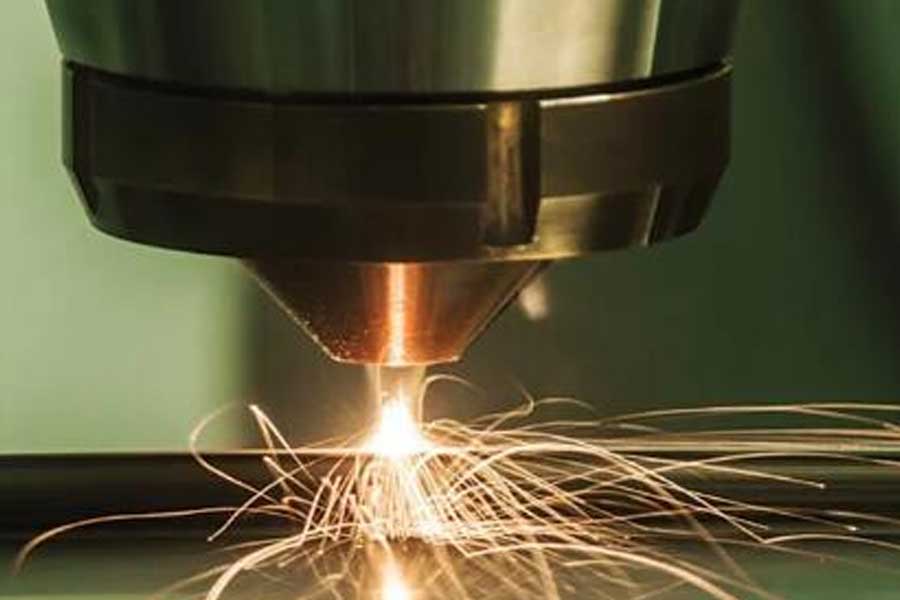
Metal Material Extrusion
Common process:
FDM (Fused Deposition Modeling)/FFF (Fuse Manufacturing)
Description: This technology was created specifically to enable cheap metal 3D printing, which can be used by small and medium enterprises. Design studios, mechanical workshops and small manufacturers use metal material extruders to iteratively design, create fixtures and fixtures, and complete small batch production. The latest development in the field is metal wire, which can be used in most desktop FDM 3D printers, making metal 3D printing available to almost everyone. The working principle of metal extrusion:
Polymer filaments or wires impregnated with small metal particles are 3D printed layer by layer according to the designed shape.
Clean the 3D printed parts and remove some adhesive.
The parts are placed in a sintering furnace, and the metal particles are melted into solid metal.
Technical advantages:
affordable, simple and safe to operate.
Technical shortcomings:
The parts must go through the same debinding and sintering process as the binder sprayed parts. More restrictions on the geometry and support are needed to prevent warpage, and the parts have high porosity that cannot achieve the same mechanical properties as forged metals. The parts are not as dense as using PBF or DED, and the shrinkage in the furnace is not accurate.
Other metal 3D printing process
Joule Printing: The Joule printing of Digital Alloys looks a lot like DED, but the wire is melted by electric current instead of being heated by an electric arc or light beam. This makes printing faster, and it has been proven that up to 2 kilograms of titanium can be printed per hour.
Liquid Metal Additive Manufacturing (Liquid Metal Additive Manufacturing):
Vader Systems created a liquid metal additive manufacturing technology that deposits liquid metal droplets at 1200°C in a manner similar to an inkjet printer.
Electrochemical Deposition (Electrochemical Deposition):
Exaddon’s CERES nanoscale metal 3D printer can use electrochemical deposition to make metal objects smaller than the width of a human hair.
DLP metal printing:
ADMATEC and Prodways provide metal DLP printing. Similar to the extrusion of metal materials, where metal powder is mixed with photopolymer resin, 3D printed parts must go through the same degreasing and sintering process, just like the extrusion method of metal materials.
Cold Spray Metal Printing:
Cold Spray Metal Printing was originally used by NASA to build metal objects in space. The main feature is fast (6 kg of aluminum or copper per hour), the disadvantage is that it is not so accurate. Australian companies Titomic and SPEE3D are the leaders in this technology.
Ultrasonic Consolidation (UAM):
Use sound to bond thin metal foil layers together, and process the excess part of each layer before bonding the next layer of foil, so it is a combination of additive manufacturing and subtractive manufacturing . Fabrisonic’s SonicLayer 3D printer series uses this technology.
Laser Engineering Net Shaping (LENS):
is a laser-based method that requires a very controllable environment. This process requires a sealed chamber, and argon is usually used to purge oxygen to keep the oxidation level as low as possible. The power range of LENS lasers is from 500W to 4kW. It can be used to process titanium, stainless steel and Inconel. Although it is difficult to maintain the anaerobic chamber, LENS provides users with better accuracy and control.
Electron Beam Free Form Manufacturing (EBF3): originally developed by NASA, it is a method mainly used in the aerospace industry. This method can produce complex geometric shapes without wasting any materials, and can create lightweight shapes to promote fuel savings.
Link to this article: Get to know the four metal 3D printing technologies
Reprint Statement: If there are no special instructions, all articles on this site are original. Please indicate the source for reprinting:https://www.cncmachiningptj.com/,thanks!
 PTJ® provides a full range of Custom Precision cnc machining china services.ISO 9001:2015 &AS-9100 certified. 3, 4 and 5-axis rapid precision CNC machining services including milling, sheet metal to customer specifications,Capable of metal & plastic machined parts with +/-0.005 mm tolerance.Secondary services include CNC and conventional grinding, laser cutting,drilling,die casting,sheet metal and stamping.Providing prototypes, full production runs, technical support and full inspection.Serves the automotive, aerospace, mold&fixture,led lighting,medical,bicycle, and consumer electronics industries. On-time delivery.Tell us a little about your project’s budget and expected delivery time. We will strategize with you to provide the most cost-effective services to help you reach your target,Welcome to Contact us ( [email protected] ) directly for your new project.
PTJ® provides a full range of Custom Precision cnc machining china services.ISO 9001:2015 &AS-9100 certified. 3, 4 and 5-axis rapid precision CNC machining services including milling, sheet metal to customer specifications,Capable of metal & plastic machined parts with +/-0.005 mm tolerance.Secondary services include CNC and conventional grinding, laser cutting,drilling,die casting,sheet metal and stamping.Providing prototypes, full production runs, technical support and full inspection.Serves the automotive, aerospace, mold&fixture,led lighting,medical,bicycle, and consumer electronics industries. On-time delivery.Tell us a little about your project’s budget and expected delivery time. We will strategize with you to provide the most cost-effective services to help you reach your target,Welcome to Contact us ( [email protected] ) directly for your new project.
Link to this article:Get to know the four metal 3D printing technologies
Reprint Statement: If there are no special instructions, all articles on this site are original. Please indicate the source for reprinting.:Cnc Machining,Thank!^^

